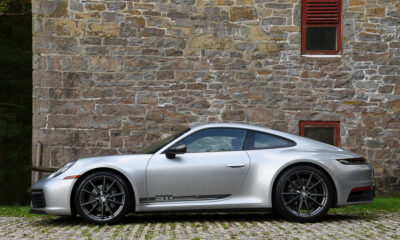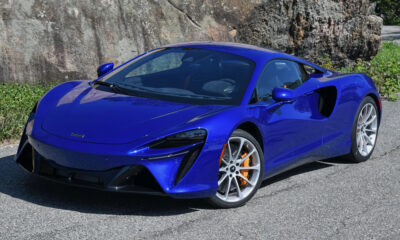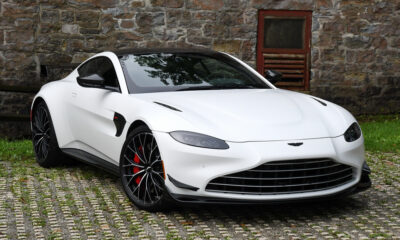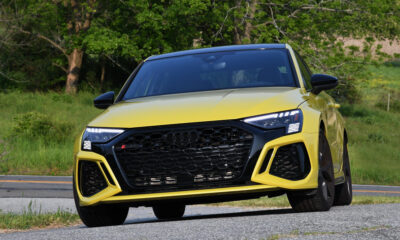
Photo: David Haueter
It’s been more than 20 years since Acura last sold the previous generation Integra in the U.S., but the model is back in a few different flavors.
I’ll give you a word of advice now. If you’re interested in an Integra but can’t afford $50,000 to buy one, don’t even test drive the Integra Type S. If you do, you’ll probably find yourself doing whatever you can to come up with the money for one. It’s that good, and that much better than the standard Integra models.
You’ll find a few different variations of the Integra on the Acura website, ranging in price from $31,500 to $50,800. Between the base model Integra ($31,500) and the Integra Type S ($50,800), there are A-Spec ($33,500), A-Spec w/Technology CVT ($36,500) and A-Spec w/Technology 6MT ($36,500) models.
As good as the other variations are, the Type S is a big step up in performance from every other Integra model.
The Integra is based on the same platform as the Honda Civic, which is a good starting point. Aside from styling and design differences and options, the Integra is the same car underneath as the Honda Civic Si, and the Integra Type S is essentially the same car as the excellent Honda Civic Type R.

Photo: David Haueter
Under the hood of the Integra Type S is a 2.0-liter inline turbocharged 4-cylinder that puts out 320 horsepower at 6500 rpm and 310-foot-pounds of torque between 2,600-4,000 rpm.
The engine is a significant step up from the 200 hp and 192 foot-pounds of torque produced by the 1.5-liter in the other Integra models, and the 2.0-liter powerplant also revs to 7,500rpm versus the 6,500 rpm in the other Integra models.
The Type S can get from 0-60 mph in a quick 5.1 seconds (as tested by Car & Driver), which cuts off nearly two seconds of the 0-60 time in the standard Integra. That added power results in a significant drop in fuel economy as well, as the Integra Type S delivers only 28mpg on the highway compared to the 36 mpg of the other Integras.
The Integra Type S has several other go-fast upgrades compared to the standard Integra (as does the Honda Civic Type R vs. Civic Si).
The Type S has a Dual AXIS strut front suspension that helps to reduce torque steer while the standard Integra makes do with a MacPherson strut front suspension. The rear suspension on all Integra’s is a multi-link setup but the Type S has larger front and rear stabilizer bars.

Photo: David Haueter
The A-Spec w/Technology Integra’s and the Type S both have adaptive dampers, but the Type S has them tuned differently, and has larger wheels wearing performance tires (265/30ZR19).
The Type S also has larger brakes (13.8-inch front, 12-inch rear) along with a lightweight single-mass flywheel and a Helical limited slip differential (both of which are also on the A-Spec w/Technology 6MT model).
The only transmission on the Type S is a 6-speed manual with rev matching. Curb weight on the Type S is 3,219 lbs. with a weight distribution of 62 percent front and 38 percent rear. Due in part to the larger brakes and wheels, the Type S weighs 146 lbs. more than the A-Spec w/Technology 6MT model.
All the Civic and Integra models are handsome cars, but the Integra Type S is quite different than the rest of them, with fantastic fender flares that widen the car by three inches at the rear, a dramatic three-pipe center outlet exhaust that looks like it was lifted off a Corvette and more aggressive aerodynamics and vents to expel hot air.
Inside, the Type S has seats with more aggressive bolstering, along with more upscale materials and use of Ultrasuede inserts.
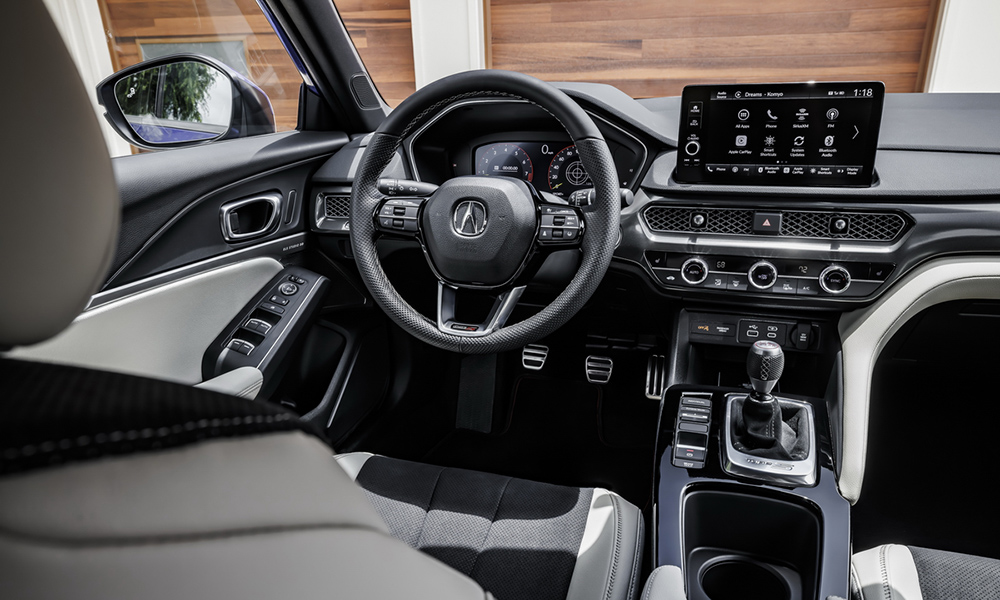
Photo: Acura
The Integra Type S drives like it looks. Acura has done a great job of blending all the elements of the car together to make a very involving and pure drivers’ car that is exciting to drive.
There are cars that are faster, sure, but few cars that do everything so well. There’s good fizzy power from the turbocharged four-cylinder combined with sharp steering responses and great grip. There’s also a surprising lack of torque steer even when you get on the throttle hard.
The Integra Type S is especially impressive on a challenging stretch of twisty road. It has great turn in and mid-corner grip, and really powers out of corners effectively for a front-wheel drive car that has more of its weight over the front.
There are modes for Comfort, Sport and Sport+ that adjust engine, steering and suspension settings, or the driver can set each individually.
I did most of my daily driving in Comfort mode but the sweet spot for backroad driving was Sport.
One complaint is that the side bolsters on the seat bottoms could be more supportive, and for a $50,000 car Acura should have put electronic adjustment controls on both seats, not just the driver’s seat.
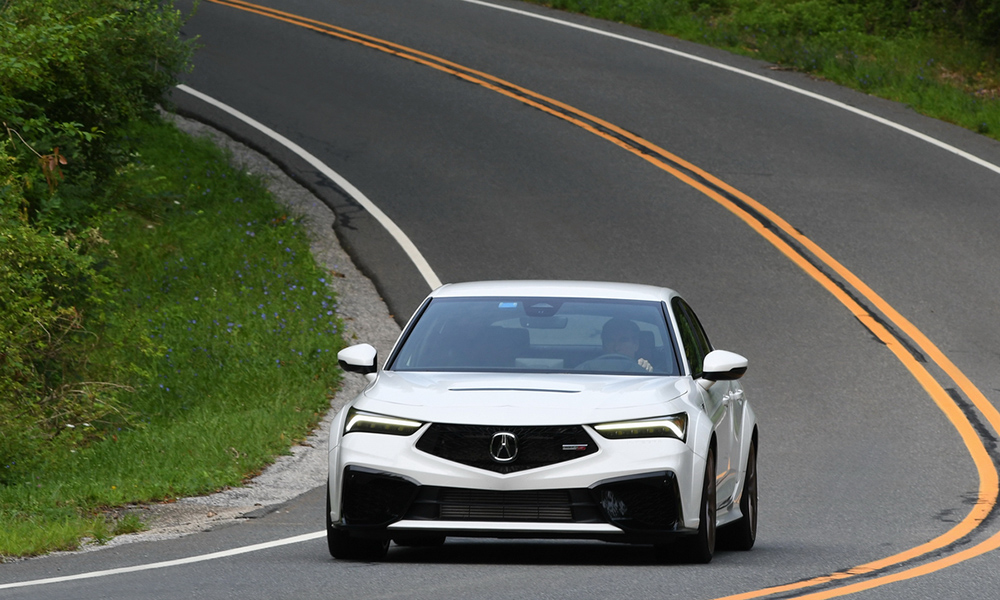
Photo: David Haueter
The Type S is really in its element on back roads but is also very capable of taking along passengers on a long interstate drive. Some may find the noise level to be too high on the highway, but it didn’t bother me, and there’s a lot of practicality built into this car with luggage space and rear seat room.
If you find the car to be a bit too edgy, the Integra A-Spec w/Technology may be another option worth considering, as it has some of the performance features of the Type S but is a bit softer in other areas.
From a dynamic perspective, the Civic Type R is naturally the closest competitor to the Integra Type S, but to me the Integra seems more upscale and sophisticated, and looks better than the Type R.
It also has more sound insulation and is a bit more acceptable to use as a daily driver. That being said, the Civic Type R is around six grand less than the Integra Type S and it may be a challenge for Honda/Acura to differentiate the two cars among enthusiast buyers who don’t care if the car wears an Acura badge or a Honda badge.
Acura considers outside competition for the Type S to be cars like the Audi S3, the BMW M235i xDrive and the Mercedes CLA 35 AMG. It certainly competes with those cars in price as it’s priced slightly higher than them. but it’s also more involving to drive than any of those, and I think it looks better as well.
The big question is if consumers will be willing to spend over $50,000 on an Integra when they could get a BMW, Audi or Mercedes for around the same price.
If you’re a real driving enthusiast, you may find that question easily answered once you drive an Integra Type S, especially if you prefer a manual transmission.
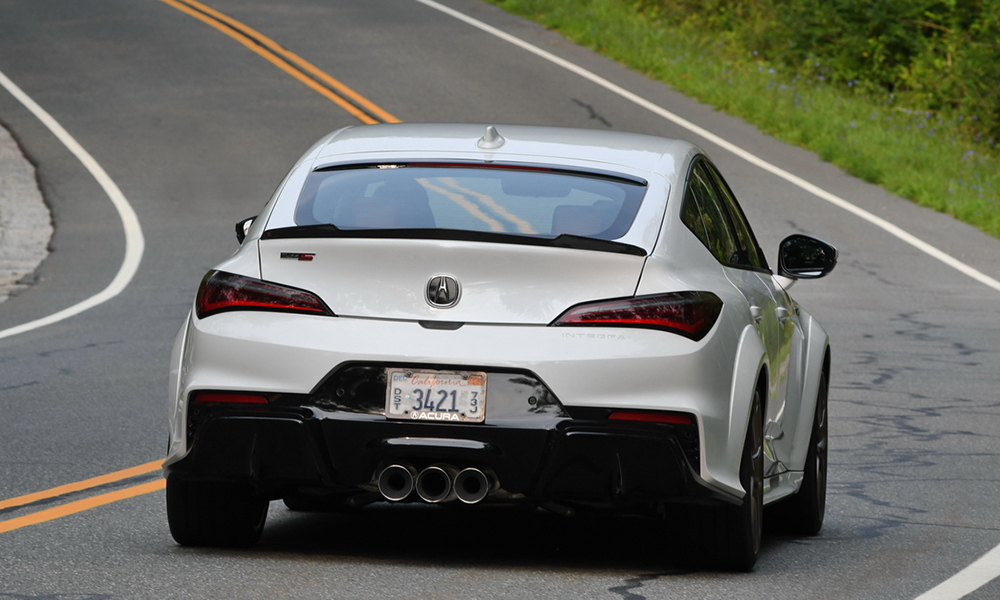
Photo: David Haueter



















